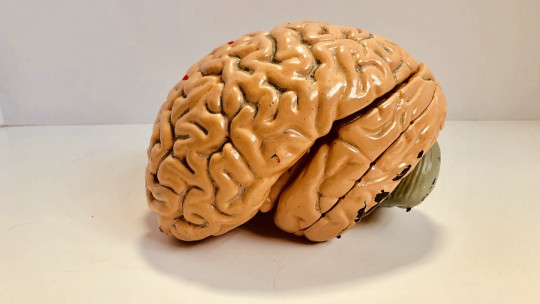
Strengths-based therapy focuses on highlighting and training the positive characteristics that the individual has.that is, your skills and abilities so that you can deal with the different situations you encounter in your life.
This therapy is compatible with other types of interventions, such as cognitive-behavioral therapy, it has also been found useful for a wide range of subjects, without or with different types of pathology and of different ages to increase their self-esteem, confidence and its functionality in the different contexts of your life.
It is effective, since it has been observed that If the patient shows a constructive mentality, he or she is more likely to highlight his or her positive abilities.. Likewise, it is essential that the subject perceives himself as a survivor, as someone who overcomes his adversities and problems and not as a victim, because the role he adopts is essential for his behavior to be active.
In this article we present strengths-based therapy, what its characteristics are, what it consists of, how to apply it, what its objectives are, which subjects it is aimed at and what strategies and techniques are used to improve the patient.
What is Strengths Based Therapy?
It is common to relate psychological therapy with improvement and work on the symptoms or problems that the patient has; That is, normally the difficulties or problems that the subject has will be treated by focusing on the negative aspects of each individual. It is for this reason, because of how therapy is typically approached based on the negative, that it has appeared a new way of facing alterations or working with the patient focusing on reinforcing their abilities and skills.
Thus, through strengths-based therapy, a personalized intervention is proposed, adapted to each subject to be able to specifically work on their most notable skills and thus be able to have a better vision of themselves and the environment that surrounds them.
Therapy goals
The purpose of therapy is to improve the person’s condition by working and improving their strengths, so that you know what abilities and skills you have to face the different difficulties that you may encounter throughout your life. This therapy is closely linked to the concept of resilience, which is understood as the ability of a subject to overcome the different problems that arise and be able to move forward, developing and leading a functional life despite the adversities of their environment.
That is, the idea will be conceived and transmitted to the patient that he is a survivor, a person who has overcome his difficulties and not as a victim. This name, which may not seem to have much importance, can affect how the subject perceives or faces the problem, since in many cases the role we play, the role we are given or choose, will be relevant or fundamental to determine which one. It will be our performance.
If we are defined as a victim, we are likely to feel weaker, more passive and with few possibilities to improve our situation; On the other hand, if we present ourselves as a survivor, as a fighter, our feeling of strength and strength increases. we see ourselves more capable of overcoming any difficult situation.
Likewise, work will be done to ensure that the person develops a mentality of strength, since this is how they are able to focus and face life taking into account their abilities and positive traits. On the contrary, if their mentality is weak, they tend to develop a way of cope by focusing on their defects and deficiencies.

We know, then, that the mentality displayed by the subject, whether positive or negative, It will influence the way you think, how you perceive yourself and others, and the way you act.. Thus, in therapy the aim is to highlight and emphasize the patient’s positive thoughts, focusing on his positive qualities, instead of working on negative thoughts.
It is very important that the treatment that the therapist has with each patient is individualized and, therefore, takes into account what is best for each patient according to their characteristics and not because of the disorder they present. The important thing is to work on the abilities that stand out in each subject regardless of the alteration they have, since as is obvious each person is different and, therefore, the techniques that work well for one may not work for another, no matter how much they have the same diagnosis.
Which patients can receive this therapy
It has been proven that the group of people who can benefit from this type of therapy is wide and varied. In other words, it is not aimed at specific subjects, but can be used with almost all individuals. So that, It has been seen to be effective as an intervention for subjects with low self-esteem, although they are not greatly affected..
But in the same way it is also useful to treat patients with more serious conditions such as major depressive disorder, schizophrenia, post-traumatic stress disorder or anxiety with the aim of improving their quality of life, increasing their confidence and security in themselves and living longer. adapted to their living conditions without their diagnosis causing them greater stress.
Also It has been proven useful to intervene in individuals of all ages, the important thing will be to adapt the techniques and intervention to the characteristics of each one. The same will happen with the number of people to be treated, since apart from individual therapy it has also been seen to be useful for treating couples and families.
How to apply Strengths-Based Therapy
Despite proposing and focusing on a different vision than usual in psychological therapy, giving greater importance to positive characteristics and thoughts, It does not mean that it is contrary or incompatible with more common therapies such as cognitive-behavioral.. In this way it can be used in a complementary way so that the work is more global and as a result benefits the patient more.
Another fundamental aspect in the way of applying or proposing the intervention is that the subject is active, that is, that he collaborates with the therapist to discover what his skills and abilities are and how these can be enhanced to be useful in different situations and problems. that will arise in your life.
Techniques used by this type of therapy
Now that we know that strengths-based therapy has been effective not only as the only therapy, but also used in a complementary way with other types of treatments, to improve self-esteem, self-confidence and enhance our strengths to cope. better the different events in life, let’s see what techniques or what mode of action this therapy proposes.
In this way, the first step or technique will consist of each person identifying their strengths, their strengths, their abilities, we all have positive characteristics, skills, positive beliefs that we can enhance. Having a diagnosis does not mean that the patient does not have abilities and be limited to that problem. The therapist will help the patient verbalize and be more aware of the positive things and aspects of him and her life, since it will be essential to face the therapy.
Once we have investigated the strengths, we propose what goals or objectives the subject has, what they want to achieve, because depending on their purposes we propose the line of work, the change to be made so that the subject can develop and overcome the difficulties that arise. found on the way.
If we are aware of our abilities and strengths, it will be easier for us to find the solution, how to face the different problems that arise. A technique or strategy commonly used in strengths therapy consists of raise the different circumstances, both positive and negative in the form of a question, that is, training the question, so that the patient can use it in their daily life and it is easier for them to understand, become aware and know how they can act.
Presented in the form of a question, the different situations and the different objectives that the subject has, it is a useful way for the patient to see more clearly how to proceed, select which is the best alternative or the strength that best works with such circumstance and thus not get stuck in the problem.
Finally, another strategy that has been found to be useful is to have a notebook where you can write down each person’s strengths, as well as the situations where they have been reflected in one’s own actions. In this way, by keeping this record, the person will be much more aware of all the abilities and skills they have, when they have used them and in what circumstances they can use them, being more likely to make use of them and not forget about it. .








